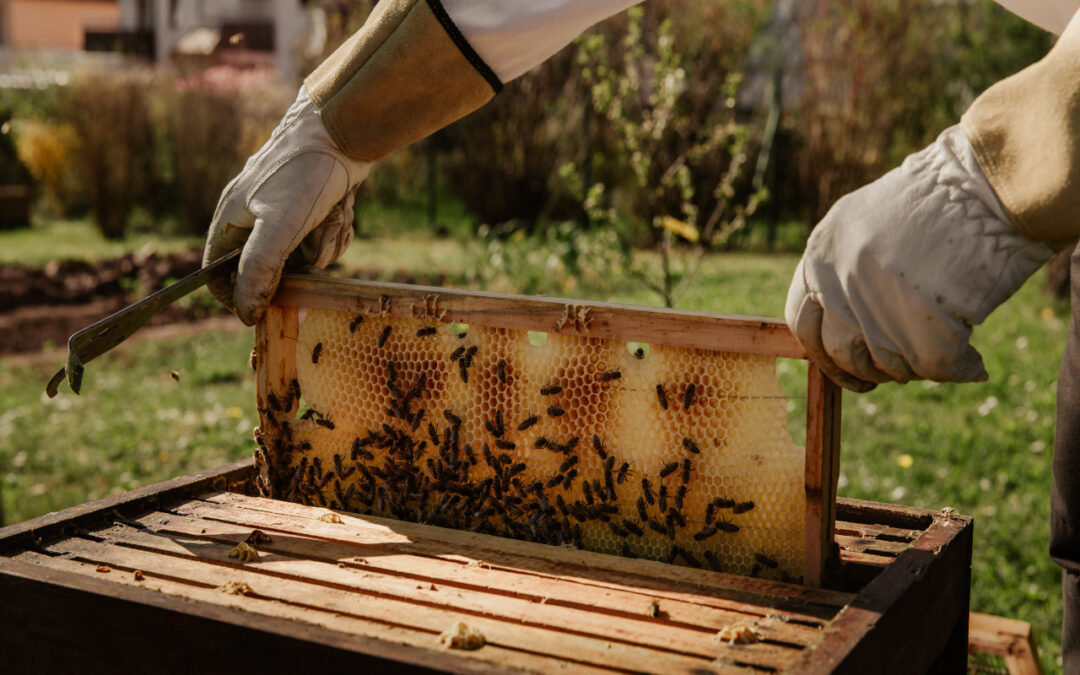Beekeeping can be an enjoyable and rewarding activity. The beekeeper does not only have the benefit of pollination of any nearby gardens but they are also able to enjoy delicious honey.
Everyone knows the expression “busy as a bee,” and it is true. Bees work so hard bringing nectar back to the hive to make honey that after about 35 days of life, they wear out their wings and their usefulness to the colony and die. The bees store the honey, which can then be used as food when flowers aren’t blooming. If it is a good season with a lot of nectar-producing flowers, the bees can collect nectar and they end up making much more honey than they could ever eat by themselves. The beekeepers are then able to harvest a good amount of honey to use for themselves or to sell for profit.
Beekeepers can profit from the honey that their bees are producing by selling two different types of honey. The honey that is easily extracted from the hive is liquid honey. Beekeepers can remove it from the honeycombs by the use of centrifuge equipment. These machines are called extractors. Beekeepers can also sell honey in another way; they sell pieces of the comb. Comb honey is honey still in the original wax combs that the bees made. Although this honey is less adaptable to use in cooking or with mixing in tea, it is enjoyed by those who prefer its natural flavors.
It is not widely known that honey comes in different colors and flavors. Different flowers have different scents. Therefore, the nectar given off by the flower will smell and taste different as well. Soil chemistry is another thing that determines how honey tastes and looks. Honey, made from the nectar of alfalfa, which grows in drier, alkali soil, may vary from white to clear. On the other hand, honey that is made from the nectar of buckwheat, which grows in more acidic soils tends to be very dark. Plus, the quality of the honeycomb that the bees make is a factor in the color and taste of honey. The color of honey can also be golden, red, and even green hues.
They must follow state and federal regulations for processing, labeling, and handling food products. It is a real business, and local governments may vary in the guidelines that they have set up regarding beekeeping in the area. Beekeepers must also consider marketing strategies to sell their honey and other types of bee products. Where will they sell their honey, and what types of consumers are they targeting for sales? Beekeeping is a rewarding hobby, but when the beekeeper is trying to turn a profit, they must view their hobby like a business and make decisions that will allow them to not only survive but thrive.


